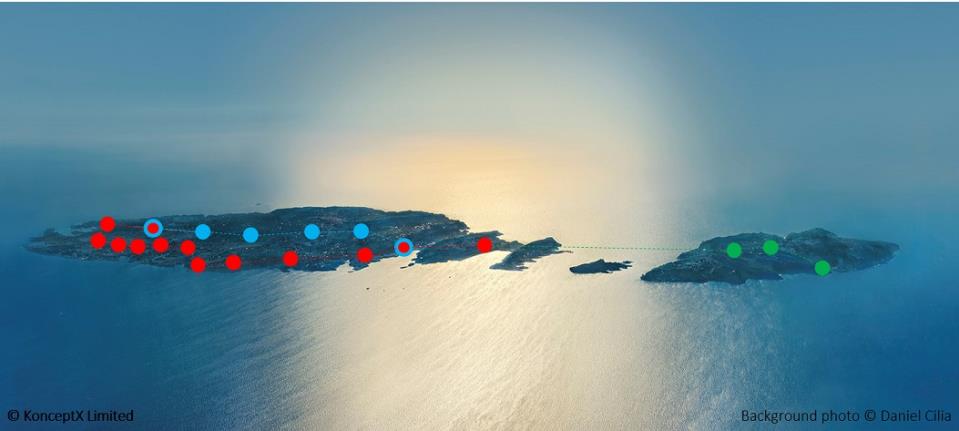The government is still in time to change its current plans for the Gozo tunnel and build it as part of a national metro system, rather than a vehicular tunnel, according to architect Konrad Xuereb.
In a reviewed report, Xuereb highlights the cost and environment benefits of having a metro connection between the two islands, rather than a tunnel for cars. These include reduced traffic across the entire country, faster travelling times, cheaper tickets and a faster return on investment. The size and route of the tunnel would be almost identical.
Transport Minister Ian Borg announced last week that four infrastructural giants have submitted offers for the project.
In his report, Xuereb said that the Pre-Qualification Questionnaire (PQQ) “may give the perception that the government’s decision on this matter is done and dusted, with no way of altering its course. However, there is still ample time to revert this decision so that a physical link to Gozo, if it is to be done, would only accommodate a metro tunnel as an extension of a national metro system.”
The architect says the plans can be altered because the diameter of a metro tunnel would be nearly the same as that for a car tunnel, and the alignment of the undersea tunnel between Malta and Gozo would be nearly the same too.
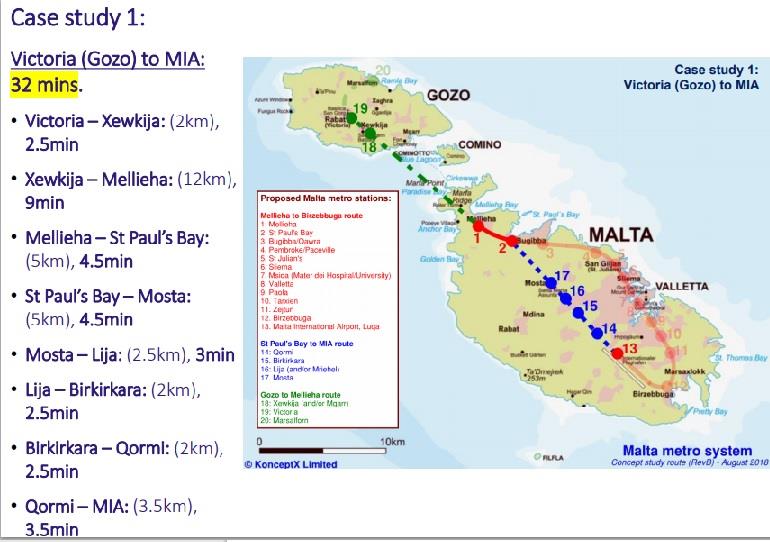
High time to re-evaluate
“The government has also publicly stated in the past months that it has commissioned studies for a metro but that this would serve the inner harbour regions in Malta only. It is high time that the government re-evaluates this position so that a proposed metro would connect the main residential, tourist and business zones in Malta, and extend to Gozo. This would then negate the need of a car tunnel between Malta and Gozo.”
Malta urgently needs to invest in vital mass transit infrastructural projects to accommodate mass public transport systems.
“A Malta metro that extends to Gozo ticks all the right boxes. A car tunnel to Gozo does not fit the bill. This is the most urgent decision to be taken for Malta’s future,” he argues.
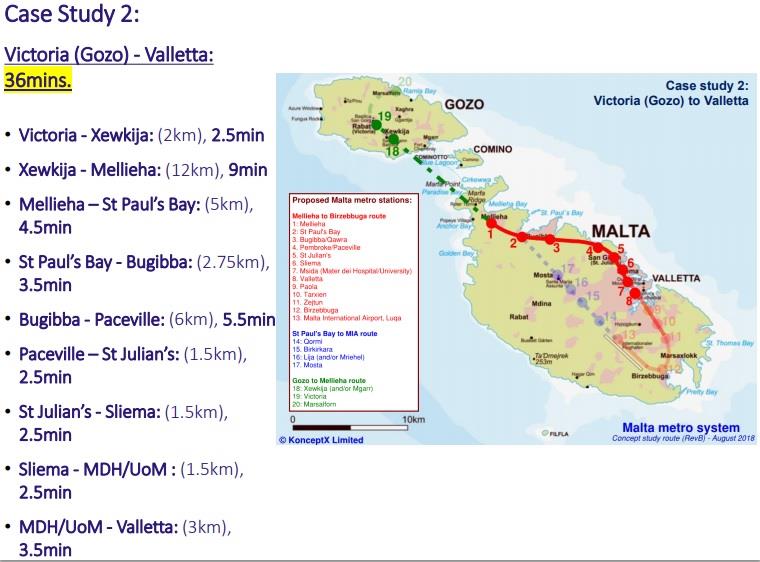
A single line metro built in three phases
Xuereb is proposing a single-line metro system built in three phases.
The first phase would start from the airport and going southwards towards Birzebbuga before turning north, going through the harbour area and end up in Mellieha. The second phase would link the airport to St Paul's Bay in a more direct route, passing underneath towns like Qormi, Lija and Mosta'.
The third phase would link Mellieha to Gozo via the undersea tunnel. It would pass through Xewkija and Victoria, ending up at Marsalforn.
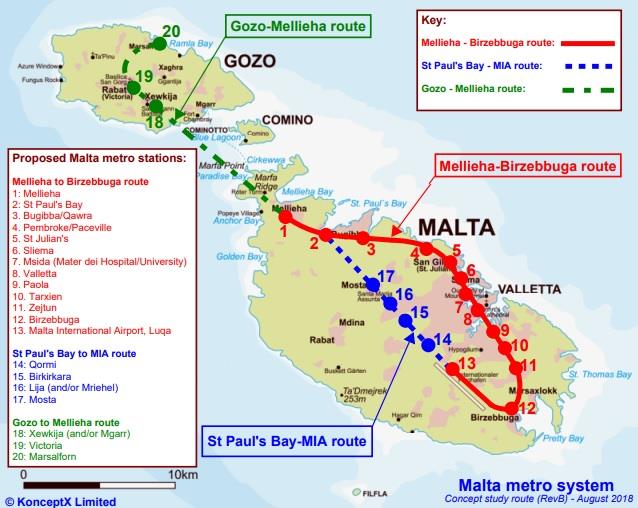
Smaller land take-up
Xuereb argues that a car tunnel would take up more space on land, as there would be a need for long ramps at either end for cars to drive down to the tunnel level. This option also creates bottlenecks at either end of the tunnel, further putting strain on the existing road transport system, while causing considerable further pollution to the already poor air quality.
In contrast, a metro system would be predominantly at the same depth, gently dipping under the channel and having vertical access via lifts and escalators at metro stations to allow passengers to reach the train platforms; thus taking up less space pro-rata when compared to the car tunnel.
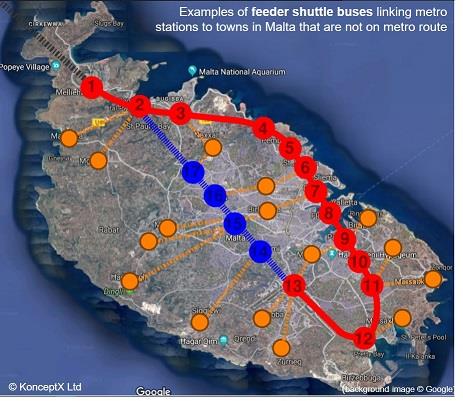
The cheaper option
Xuereb says the proposed 13km tunnel would cost around €700 million to build.
Inspections, operation and maintenance would cost around €30 million a year.
“If an average of 6,500 vehicles will use the car tunnel every day (i.e. nearly 2.37 million vehicle trips per annum), the cost per vehicle to use the car tunnel on a 100-year return period is likely to be approximately €30 per return trip.”
The cost could be higher when considering other factors. “Unless funded by tolls, this will entail an ongoing capital cost to the government, paid by the taxpayer.”
As a comparative study, the current toll to cross the 12.87 km long Fréjus vehicular tunnel between France and Italy is €58.80 one-way and €73.90 return. Similarly, the current levy to drive through the 11.61 km long Mont Blanc vehicular tunnel between France and Italy (used by ~ 5,000 vehicles per day) is €46.30 one-way and €57.80 return (2020 figures).
Both these tunnel projects were relatively easier to construct than the proposed undersea car tunnel proposed between Malta and Gozo, Xuereb notes.
On the other hand, the proposed national metro system would cost around €4 billion, but this would serve the entire country, not just the Gozo link.
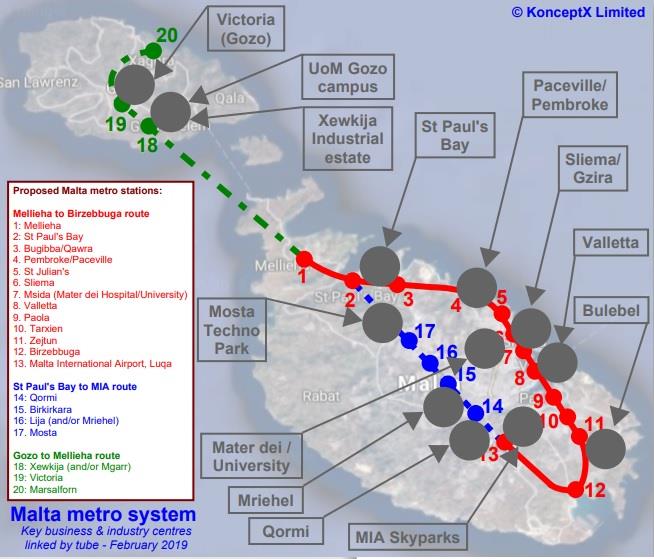
Part of the capital costs of the metro link between Mellieћa and Gozo (approximately €675 million) could be eligible for EU funds.
€1.575 billion would be financed by government bonds with maturity over 20 years. The remaining €1.75 billion would be paid by the national coffers, amounting to €175 million per annum over 10 years, “which is roughly the same amount the country has been spending per annum in road widening schemes in the past few years.”
If only one in four people were to use the metro, this would amount to 53 million trips per year. The target revenue from ticketing would amount to €245 million per annum - based on a typical fare of €2 per metro trip (and capped at, say, €5 per day for unlimited daily use of the metro).
Another €55 million could be generated from the leasing of space in stations for retail, raising total revenue to €300 million yearly. Half of this amount would go to cover operational and energy costs, leaving a final revenue of €150 million.
Xuereb estimates that the full capital cost of the system could be recouped in around 30 years.
The payback period would be halved to 15 years if one considers the savings in reduced traffic time and health problems caused by pollution.
The project would also generate employment for more than a thousand people.
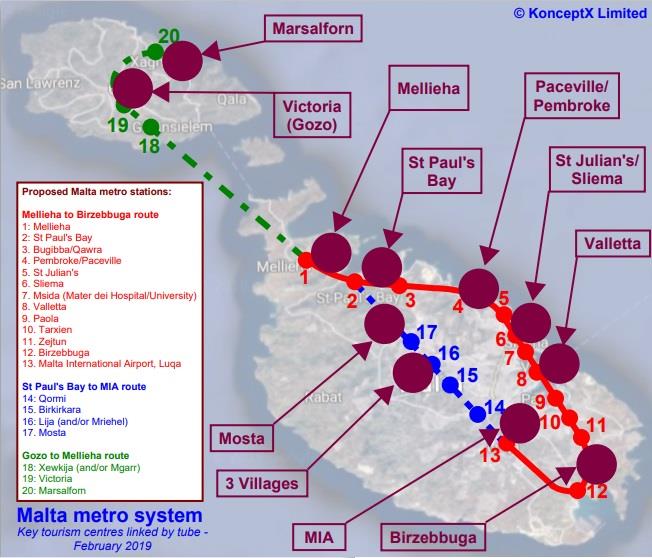
Faster travelling times
He estimates that the entire project could be constructed in 15 years, including the time it takes to conduct the necessary studies.
The proposed metro would address the key challenge facing Gozitans – that of being able to commute to key destinations in Malta quickly and reliably, and as importantly of being able to return to Gozo rapidly at the end of the day, irrespective of weather conditions.
“It would take merely 32 minutes by tube from Victoria Gozo to the airport (MIA), and just 36 minutes from Victoria Gozo to Mater dei Hospital/ University, with a train departing every 5-10 minutes.”
This would eliminate the need of Gozitans relocating to Malta to work or study there, thus encouraging Gozitans to remain in the sister island, helping revert the brain drain which has trickled steadily out of Gozo over the past decades.
A metro link to Gozo would also enhance the sister island’s vision as an eco-island destination, allowing tourists to reach the island directly from the airport after landing and spending a quality holiday in Gozo.
“On the other hand, the car tunnel currently proposed by the government would likely limit the maximum speed to around 30 km per hour during the crossing, which would entail over 25 minutes to drive from Nadur to Manikata, to then join the slow-moving, polluting, traffic when one emerges from the car tunnel; thus making door-to-door commute during peak times easily over an hour and a half.”
This, he says, would “hardly be any improvement time-wise from the current situation faced by Gozitans to cross to Malta, and considerably more expensive to do so than existing.”
“A 36-minute €2 trip by metro from Victoria Gozo to University of Malta, say, is thus much faster, cheaper, convenient and healthier to Gozitans than the car tunnel alternative.”
